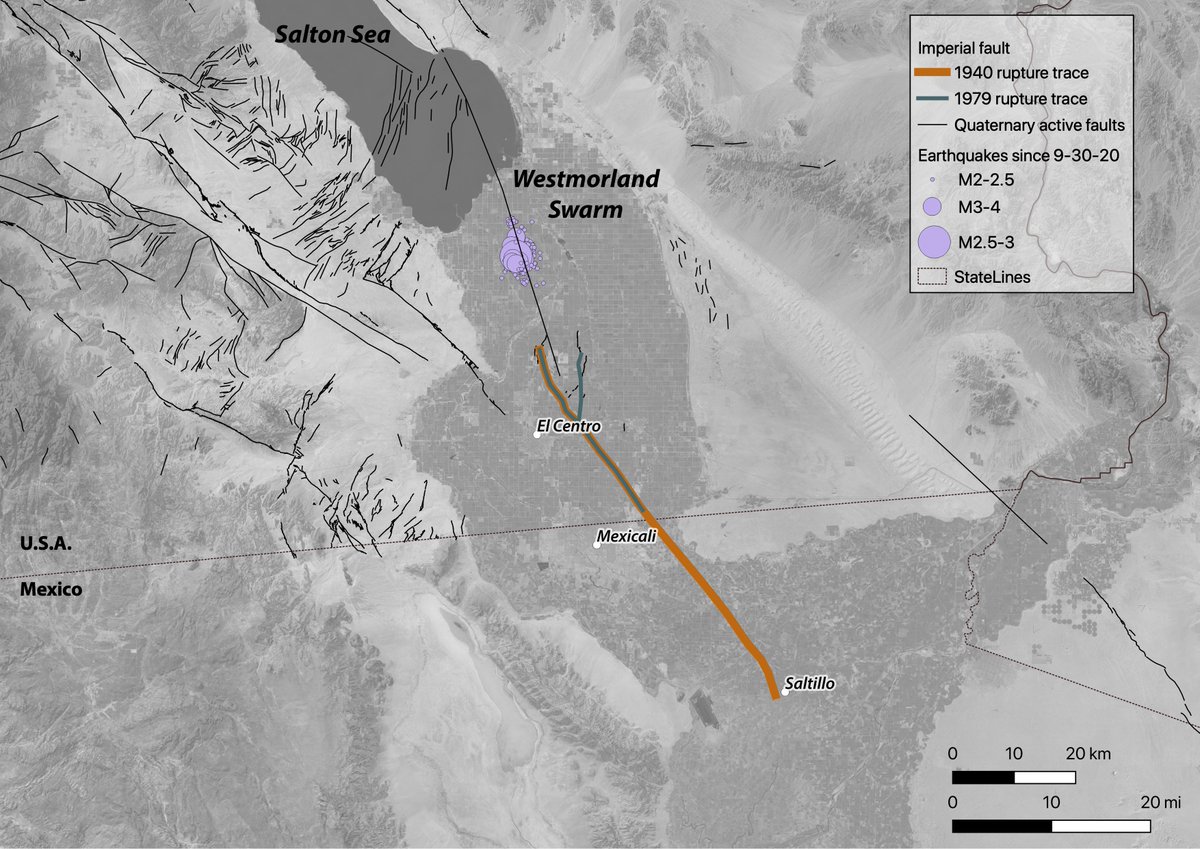Discover and read the best of Twitter Threads about #faultfriday
Most recents (3)
Yesterday afternoon, just before 4 pm local time, a M6.0 earthquake occurred at the California-Nevada border. Let’s dive deeper into some of the regional geology on this edition of #FaultFriday.
East of the San Andreas fault, the plate boundary doesn’t stop moving. Even though ~70% of the relative motion of the Pacific-North American plates occurs within the San Andreas fault system, that leaves ~30% to be accommodated elsewhere.
Moving east from the San Andreas fault from ~San Francisco, more plate motion is accommodated at the eastern rangefront of the Sierra Nevada. If you’ve ever wondered why the Sierra look even more impressive from the east than the west, enter: active tectonics.
Yes, swarms aside, it is still Friday, and on this channel, that means #FaultFriday. To learn more about the area around the Westmorland swarm, let’s look at the Imperial fault of southern California today.
The Imperial fault is a right-lateral strike-slip fault (ow.ly/gKEq50BIfDq) that runs south of the Salton Sea, across the US-Mexico border, and into Mexico. The Imperial fault had two significant earthquakes in the 20th century, a M6.9 in 1940 and a M6.5 in 1979. 

Before the 1940 El Centro event, this fault probably did not have an earthquake in the previous 300 years. Geologists can literally uncover the history of past earthquakes along a fault by digging a shallow trench across a fault and observing and dating the offset layers.
Yes, check your calendars—today is Friday! We are happy to bring you a recurring weekly treat of #FaultFriday, where we introduce you to a different fault across the country.
For this #FaultFriday, let's visit Wyoming and check out the normal Teton fault. @WyGeoSurvey recently published a gorgeous new map of the Teton fault below: 

New field mapping of the Teton fault, utilizing lidar data, shows the fault continues further to the north and the south than previously thought, and is a bit more complex. This GIF compares previous mapping (blue lines) to new mapping (red lines).
